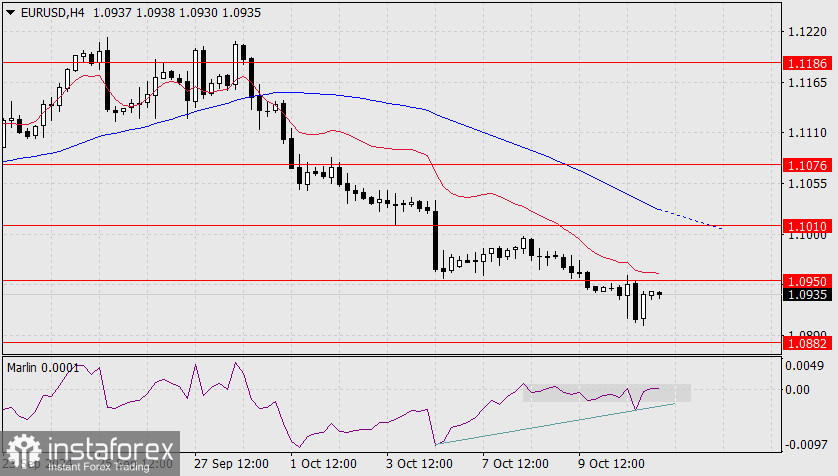Yesterday's moderately pessimistic news from the U.S. unsettled the euro, causing it to fluctuate within a daily range of 55 points and close the day with a loss of only 4 points. The number of unemployment benefit claimants increased by 42,000 over the week, casting doubts on the strong employment data from last Friday. The core CPI rose in September from 3.2% to 3.3% year-on-year, while the overall CPI fell from 2.5% to 2.4%, against an expectation of 2.3%. Naturally, the potential ECB rate cut next week is also adding pressure. However, the dollar's balance remains uncertain due to tensions in the Middle East and the simultaneous easing of monetary policy by both the ECB and the Federal Reserve. Considering the ongoing strong growth in the stock and commodity markets, the euro could potentially begin to strengthen ahead of the ECB meeting, as it seeks this balance. Since the start of the week, the euro has only declined by 38 points, clearly indicating its reluctance to fall further.

On the daily chart, the price has consolidated below the 1.0950 level. The long lower shadow indicates that another attempt to reach 1.0882 is unlikely. Even if the euro is declining from the 1.1185 level, this entire movement appears as indecisive trading driven by geopolitical factors. It is likely to end with the price breaking above the 1.1010 level. A breakthrough above 1.1076, along with the MACD line, would signal the euro's return to medium-term growth.

On the four-hour chart, the price's convergence with the oscillator has evolved. The Marlin oscillator is in positive territory but has not yet exited the consolidation range. The reversal is still in progress. Here, the price needs to break above the 1.1010 level to also overcome the resistance of the MACD line. We continue to wait.
 English
English 
 Русский
Русский Bahasa Indonesia
Bahasa Indonesia Bahasa Malay
Bahasa Malay ไทย
ไทย Español
Español Deutsch
Deutsch Български
Български Français
Français Tiếng Việt
Tiếng Việt 中文
中文 বাংলা
বাংলা हिन्दी
हिन्दी Čeština
Čeština Українська
Українська Română
Română

